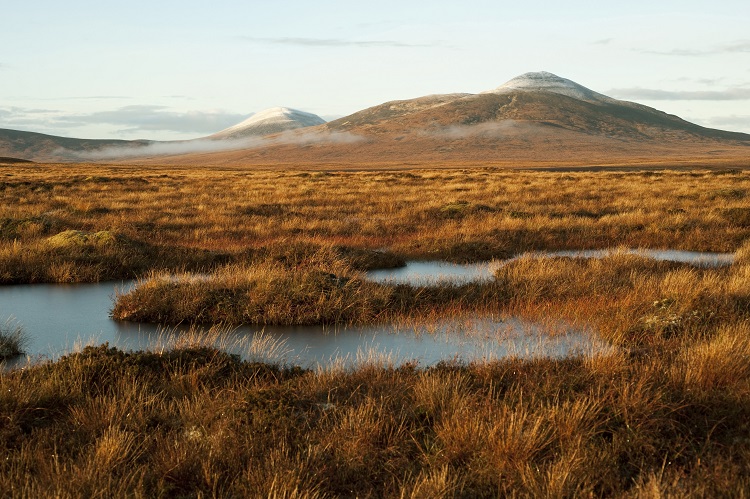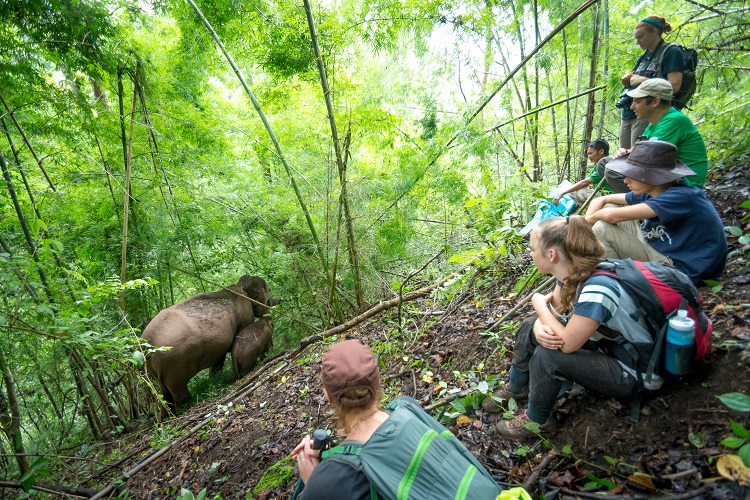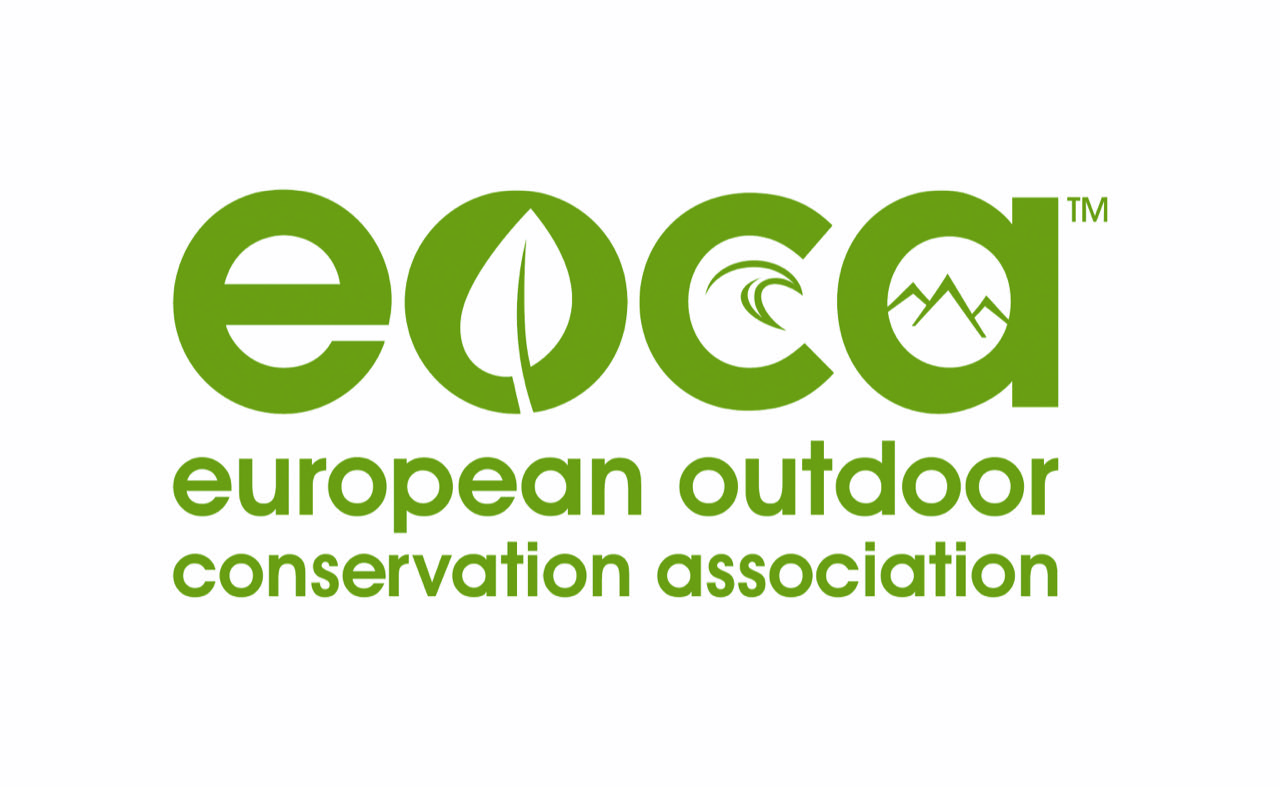The European Outdoor Conservation Association (EOCA) is celebrating being able to support more projects than ever before during its 2017 Spring Funding Round. Three projects were chosen during a public vote which reached 60.4 million people worldwide, and a further three were chosen by EOCA members themselves. These are all to be funded from membership fees and fundraising monies raised from the European outdoor Industry. In addition, three further projects are being funded by three individual EOCA members.
During March, following a four month process of accepting, accessing and approving applications, EOCA held its annual spring public vote. A shortlist of projects was showcased by The Great Outdoors (UK), Alpin (Germany, Austria and Switzerland), and Norr Magazin (Germany), as well as on the English and German EOCA websites. Readers of the magazines, outdoor enthusiasts and supporters of the projects were all invited to vote for their favourite project in three categories and the project with the most votes in each category is now being funded. A private vote for members only was then held, with a further three projects being chosen for funding. In addition to the 6 projects funded by EOCA, members POMOCA , KEEN and Osprey Europe have also each chosen a specific conservation project to fund entirely themselves and ORTLIEB decided to make a donation towards a winning river conservation project in Germany which they were supportive of. The 9 projects are all in different countries, 5 being in Europe, and tackle issues as wide ranging as metal waste left in mountains, elephants being poached, rubbish in rivers, overuse of forest resources, the captive elephant tourist trade and restoration of peatland.
EOCA member Outdoor Blogger Network (OBN) monitored the public vote this year for the first time and their data recorded an Opportunity To See (OTS) figure of over 60.4 million people! News of the vote appeared on social media, blogs, online media and in print media. It featured in various European countries as well as North America, Bangladesh and a number of South American countries. Projects got involved in radio interviews as well as giving talks at universities and providing information for national newspapers. The reach of the vote far exceeded expectations, playing a very valuable role in raising awareness of the conservation issues and work being faced by the organisations applying to EOCA for funding.
Catherine Savidge, Joint General Manager at EOCA said “we are thrilled this year to be able to support more conservation projects than ever before. All of the projects in the shortlist deserve and need funding and so it is a pleasure to be able to facilitate the funding of these 9 projects, thanks to the generosity of EOCA members. We also trust that the huge reach of the public vote benefits all of the other projects on the shortlist and perhaps brings them the extra recognition and support that they need.”

RSPB Forsinard Flows; view from visitor trail, including snow-capped Ben Griam, Highland, Scotland. November 10, 2010.
Please see below for a description of each of the chosen projects:
Conserve and Restore Habitats for Otters, Romania The aim of this project is to conserve and restore aquatic habitats for otters in a protected area in the Vrancea mountains in the Carpathians of SE Romania by engaging local communities and outdoor enthusiasts. Asociatia pentru Conservarea Diversitatii Biologice will do this together with volunteers from the local community along 30km of the River Putna by monitoring the otter population, building 6 otter holts to encourage otters into areas where few signs of them are seen, identifying and protecting existing otter holts, planting 1000 native trees on the river banks, removing invasive species, and removing waste. The project will also raise awareness of the otters and their conservation in various ways including along two 35km bike trails. Nominated by: OutDoor
Chosen in the public vote in conjunction with Alpin Magazin and The Great Outdoors.
A New Ecotourism in Thailand Currently, nearly 5000 elephants endure life in trekking camps in Thailand, giving rides and performing tricks for tourists. Meanwhile, wild elephant populations are dwindling. The Mahouts Elephant Foundation works with mahouts living in and caring for an 8000-acre protected area of forest, used to release captive elephants back into native habitat. Through this project, a group of 3-4 elephants will be walked 100+km in phases from tourist camps and returned to the forest to join previously released elephants. Ecosafaris, enabling tourists to hike and camp in the forest and observe the behaviour of elephants in their natural environment will pay the wages of the mahouts, giving an alternative to captive-elephant tourist attractions. Campsites and homestays will be provided by the mahouts and their families. Moreover, the presence of elephants in the forest will bring a greater incentive to protect this forest. The project will also research, in partnership with the Centre for Compassionate Conservation, how elephants integrate and behave in the forest to benefit future transfers of elephants. Nominated by: Ferrino.
Chosen in the public vote in conjunction with Norr Magazin
Chittagong Hill Tracts Programme, Bangladesh This project is a sustainable, community-owned conservation initiative that empowers indigenous tribesmen to be stewards of their own unique and endangered ecosystem, heritage, and culture. Through the exchange of incentives in a pilot project, the Creative Conservation Alliance has successfully reduced hunting pressure on 15 species by 50% in the last remaining primary tropical forest in Bangladesh. The communities sign moratoriums on hunting of species in return for new schools and improved market access for their craft products, thus reducing hunting. This area harbours the very last in-country populations of several species of turtles as well as clouded leopards, Chinese pangolins, Asian elephants and sun bears. Expanding this programme by providing these incentives and employing ten more parabiologists -local, reformed indigenous hunters to monitor wildlife, illegal wildlife trade and logging and be conservation ambassadors for the region- will significantly relieve subsistence hunting pressure throughout the region.
Nominated by: Ferrino.
Chosen in the public vote
Elephant Monitoring and Anti-poaching (eMAP) – Tsavo, Kenya. Taita Ranches and Conservancies in the greater Tsavo ecosystem seasonally host the highest concentration of elephants in Kenya and are a popular tourist destination, but also suffer high rates of poaching – with 60% of all poaching in Kenya in 2014 occurring in Tsavo ecosystem. It also has the highest incidence of human-elephant conflict in the country, resulting in resentment from the local communities. This project, proposed by Tsavo Conservation Group, will deploy a comprehensive, community based elephant monitoring network across the entire Taita ecosystem. Recruited from local communities and trained professionally, a team of 14 eMAP monitors, each responsible for a specific zone, will collate vital data on poaching, human-elephant conflict and elephant movements. This will inform community anti-poaching operations spanning the 1.4 million-acre expanse of the Taita Ranches and Conservancies and support the design and implementation of appropriate human-elephant conflict mitigation measures in this region. Nominated by: Chrissy Dorn Business Development Outdoor & Sports. Chosen by EOCA Members.
Restoring the Peatland of the Flow Country, Scotland The Flow Country is a stunning blanket bog in north Scotland. This globally rare habitat is home to many special animals and plants including golden eagles and sundew. It is also the largest terrestrial carbon store in the UK. However, conifer plantations from the 1970s and 80s are drying out the peat, causing carbon release into the atmosphere, contributing to climate change, and reducing habitat for wildlife. RSPB Scotland is working with partners to restore areas of bog in the heart of the Flow Country and EOCA funding will transform 3.64ha of the Dyke plantation by felling the trees and blocking drains, thus raising the water table and allowing the bog to be restored naturally. Within 10-20 years, the area will become a world of amazing wildlife once more, a place to be inspired by peace and space, and an essential carbon store, helping to tackle climate change. Nominated by: Mountain Equipment. Chosen by EOCA Members.
Cleaning up River Mulde, Germany The River Mulde, which flows from Lake Muldestausee and into the River Elbe in North East Germany is popular with locals and visitors for its recreation opportunities and its surrounding landscapes. In 2013, the River Mulde experienced severe flooding. Since the lake’s altitude is the lowest in the region, litter and rubbish picked up by the floods contaminated and remained in the rivers and the lake. During this project, Friends Association Biosphere Reserve Middelelbe will take the lead in organising the local community, a local school and a Junior Rangers event, to clean up the litter along 1-2 km of the River Mulde. In addition, a study will take place on the rubbish collected to analyse the sources of contamination. Events will be carried out to raise awareness of the issue with local stakeholders. Nominated by: ORTLIEB. Part funded with a donation from ORTLIEB. Chosen by EOCA members
Cleaning Up the Alps Obsolete facilities such as barbed wire, live shells, ammunitions, abandoned ski stations and cables are a real plague and danger in the wilderness – for outdoor enthusiasts and wildlife. Since 2002, Mountain Wilderness France (MW) has been working with volunteers to remove such facilities. Birds in the area, including bearded vultures, ospreys, owls, eagles, grouse and ptarmingans are particularly at risk from cables and wires and numerous carcasses are found under cables. These items are also dangerous for people living, working and exploring wilderness areas. During this one year project, MW will undertake three separate dismantling and removal operations including, removing barbed wire and other scrap remaining from WW2 in Mercantour National Park and Cerces Massif. MW will also communicate the success of the project widely so as to raise awareness of the issue with mountain inhabitants, outdoor enthusiasts as well as politicians and decision makers. Their communications recently contributed to the development of the ‘Mountain Law’ in France (Oct 2016), requiring operators to dismantle ski lifts if they are not used for 5 years. Chosen and Funded by: Osprey Europe
Conservation of Ringed Seals, Lake Saimaa, Finland The Saimaa ringed seal is a sub species of the ringed seal and was isolated from the Baltic Sea in Lake Saimaa, Finland around 8,000 years ago. The population was reduced drastically at the end of the 19th Century due to bounty hunting and again during the 1960s due to the use of fishing nets made from nylon. The endangered population is around only 360 individuals (2016 figure), and is still threatened by fishing methods, traps and nets used by recreational fishermen, increased tourism and climate change. This project will continue the work of the Finnish Association for Nature Conservation with recreational fishermen, tourism providers and local communities to ensure the survival and protection of the Saimaa ringed seal into the future. Chosen and funded by: Pomoca
Mangrove restoration, to Improve Livelihoods, Great Aceh Regency, Indonesia. The Banda Aceh area is still struggling the after effects of the 2004 tsunami. All of the mangroves were lost, resulting in the loss of habitat for small fish, which in turn has reduced food and income for the villagers. There is no shade from trees for locals or tourists and seawater now comes onto the land making it impossible to grow crops. Through this project, YADESA ACEH aims to address some of these issues by planting 45,000 mangrove seedlings and 400 fruit tree seeds in the Lam Guron area. 80 people will be trained by an expert in mangrove establishment and care, and will in turn supervise 468 families involved in the project. The community has offered up their own private lands in tidal areas to become community land planted with mangroves. Further inland, fruit trees will be planted as a source of income. Chosen and funded by: KEEN
INFO: EOCA



